Choosing the right fuel for your 2JZ engine isn’t just about filling the tank and hitting the road. It’s a balancing act between performance, safety, and reliability. Whether you’re running a stock setup or pushing your engine to its limits with boost and high compression, the type of fuel you use can make or break your build.
Let’s start with the basics: can you run 87 or 91 octane on a 2JZ? The short answer is yes, but with caveats. If your 2JZ is mostly stock and naturally aspirated, 87 octane pump gas might get you by. However, it’s like walking a tightrope without a safety net—detonation risk creeps up, especially under load or higher temperatures. Jumping to 91 octane adds a cushion against knock, giving you more tuning flexibility and peace of mind. Think of octane as your engine’s shield against premature combustion; the higher it is, the better your engine can handle aggressive timing and boost.
Now, what about premium pump gas versus race fuel? Premium pump gas is convenient and generally safer for daily driving, but race fuel brings a different level of consistency and power potential. Race fuels often have higher octane ratings—sometimes 100+—and cleaner-burning additives that help your engine breathe easier and run cooler. This means you can safely push your 2JZ harder without worrying about detonation or long-term damage. But here’s the catch: race fuel can be pricey and less available, making it less practical for everyday use.
Then there’s E85, the wild card in the fuel game. Running E85 on a 2JZ offers some surprising benefits. It cools the intake charge better than gasoline, which helps reduce knock and lets you run more aggressive timing and boost. But it’s not all sunshine and rainbows. E85 requires more fuel volume—about 30% more than gasoline—so you’ll need bigger injectors and upgraded fuel pumps. Plus, it demands precise tuning to avoid running too lean or rich. If you’re ready to dive into tuning, E85 can be a cost-effective way to boost power, especially for those who don’t mind the extra fuel consumption.
What octane should you pick for boosted or high-compression 2JZ setups? Generally, anything below 91 octane is risky when you crank up boost or compression. Most builders recommend 93 octane or higher for moderate boost, and race fuel or E85 for serious power goals. This helps prevent knock, which is like an unwanted firecracker going off inside your engine—damaging, loud, and costly.
Switching fuels isn’t just about the pump; your entire fuel system needs to keep up. Running E85 or methanol means upgrading your fuel pump, injectors, and lines to handle the increased flow and corrosiveness. Ignoring this step is like trying to drink from a straw when you need a firehose.
Understanding how fuel affects your engine’s knock resistance and combustion efficiency is key. Higher octane fuels burn slower and more evenly, preventing those nasty pinging sounds and allowing your engine to make more power safely. It’s like giving your engine the right rhythm to dance to, instead of stumbling over its own feet.
Flex fuel sensors are another cool tool in the 2JZ world. They let you switch between pump gas and E85 on the fly without retuning. Imagine driving to the track on cheap pump gas, then flipping a switch to E85 for maximum power once you’re ready to push. It’s convenience and performance rolled into one.
When it comes to brands, Shell V-Power and VP Racing fuels often top the list for 2JZ enthusiasts. They offer consistent octane ratings and quality additives that help your engine run cleaner and stronger. But remember, the best fuel is the one you can trust to deliver what your engine needs every time.
| Fuel Type | Octane Rating | Pros | Cons |
|---|---|---|---|
| 87 Octane Pump Gas | 87 | Cheap, widely available | Higher knock risk, limited tuning |
| 91-93 Octane Premium Gas | 91-93 | Better knock resistance, easy to find | More expensive than regular gas |
| Race Fuel | 100+ | High power potential, stable burn | Costly, less accessible |
| E85 | 105+ (effective) | Cooler intake temps, high knock resistance | Requires fuel system upgrades, higher consumption |
Finally, fuel choice affects more than just power—it changes how your turbo spools up, how your throttle responds, and how smoothly power hits the wheels. Higher octane fuels and E85 can reduce turbo lag by allowing more aggressive timing and boost without knock, giving you that crisp throttle feel and punchy acceleration. It’s the difference between a lazy jog and a sprint off the line.
In the end, picking fuel for your 2JZ is about knowing your goals, your setup, and your budget. Whether you stick with pump gas, step up to race fuel, or experiment with E85, understanding how each option interacts with your engine will help you get the most out of this legendary powerplant.
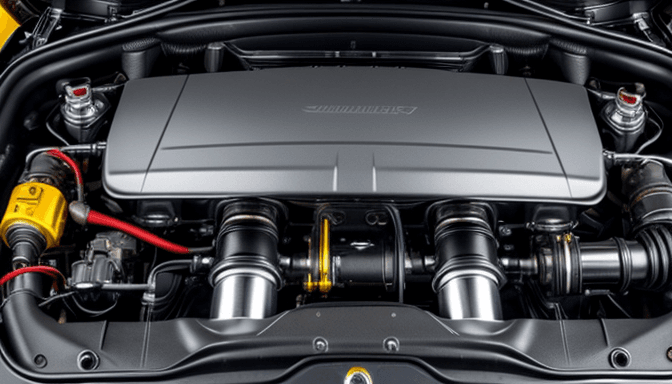
Understanding Octane Ratings: 87 vs 91 Octane on a 2JZ
When it comes to fueling your 2JZ engine, the octane rating isn’t just a number on the pump—it’s the heart of how your engine breathes and performs. You might wonder, “Can I just use regular 87 octane and be fine?” Well, it really depends on what you’re aiming for with your build. The 2JZ, known for its robust design, can handle a lot, but the fuel you choose plays a huge role in keeping it happy and healthy.
Think of octane rating as fuel’s resistance to knocking. Knocking is that nasty pinging sound that means your fuel is combusting too early or unevenly, which can damage your engine over time. The higher the octane, the more resistant the fuel is to this premature combustion. So, 91 octane fuel is like a shield for your engine, especially when you’re pushing it with boost or higher compression.
Using 87 octane on a stock, naturally aspirated 2JZ might work okay if you’re gentle with the throttle and don’t expect heavy loads. But once you add a turbo or crank up the compression, 87 octane becomes a risky choice. It’s like trying to run a marathon in flip-flops—sure, you can do it, but you’re asking for trouble.
On the other hand, 91 octane fuel gives you a safety net. It lets you tune your engine more aggressively, squeeze out extra power, and avoid the dreaded knock. This is especially true if you’re running boost or have modified internals. The fuel burns cleaner and steadier, which means your 2JZ can operate closer to its potential without hesitation.
| Octane Rating | Best For | Knock Resistance | Tuning Flexibility |
|---|---|---|---|
| 87 Octane | Stock, naturally aspirated, low boost | Low | Limited |
| 91 Octane | Boosted, high compression, performance tuning | High | Wide |
Remember, running 87 octane on a turbocharged 2JZ is like juggling knives—one wrong move and you could damage your engine. But with 91 octane, you get a smoother, safer ride and more room to push your setup. So, next time you’re at the pump, ask yourself: do you want to play it safe or risk it for a little extra thrill? Your 2JZ will thank you either way, but the right fuel makes all the difference.
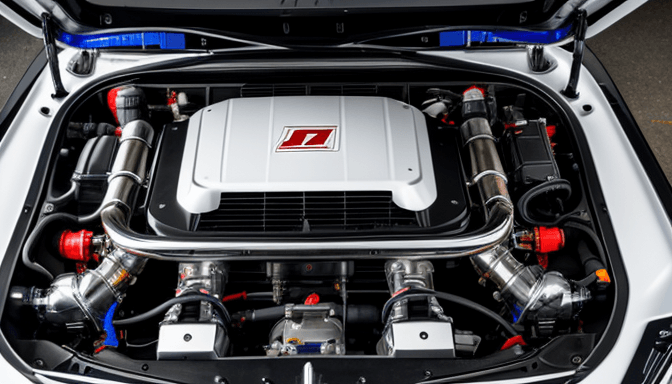
Premium Pump Gas vs Race Fuel: Safety and Power Comparison
Choosing the right fuel for your 2JZ engine isn’t just about grabbing the highest octane at the pump. It’s a balancing act between safety and performance. Premium pump gas, typically ranging from 91 to 93 octane, offers a convenient and cost-effective option for many daily drivers and moderate builds. It’s designed to keep your engine running smoothly without knocking under normal conditions. But is it enough when you push your 2JZ to its limits?
Race fuel, on the other hand, packs a punch with octane ratings often above 100. This higher octane means it resists detonation better, allowing for more aggressive timing and higher boost pressures without the fear of engine knock. That extra safety margin can translate into real power gains, especially on turbocharged or high-compression setups. But it’s not just about raw numbers—race fuel also tends to have cleaner-burning additives that can help keep your engine internals cleaner over time.
Now, here’s the kicker: using race fuel doesn’t automatically mean you’ll see massive power gains. Your engine’s tune, supporting mods, and even ambient conditions play huge roles. If your 2JZ is running a conservative tune on premium pump gas, switching to race fuel might feel like a slight nudge rather than a leap. However, for those who want to push the envelope, race fuel provides the breathing room to safely extract more power without risking costly knock damage.
From a safety perspective, race fuel is the clear winner for high-stress applications. It acts like a cushion, absorbing the shock of extreme combustion events and preventing the kind of pre-ignition that can wreck pistons. But for everyday driving, premium pump gas is often just fine. It’s easier on your wallet and widely available, making it the practical choice for most enthusiasts who don’t need to squeeze every last horsepower out of their 2JZ.
Here’s a quick breakdown to put things in perspective:
| Fuel Type | Octane Rating | Best For | Pros | Cons |
|---|---|---|---|---|
| Premium Pump Gas | 91-93 | Daily driving, mild builds | Affordable, accessible, decent knock resistance | Limited power ceiling, less safety margin for high boost |
| Race Fuel | 100+ | High boost, aggressive tuning | Superior knock resistance, cleaner burn, more tuning flexibility | Costly, less available, requires precise tuning |
In the end, your choice boils down to what you want from your 2JZ. Want peace of mind during hard pulls? Race fuel is your ally. Prefer simplicity and budget-friendliness? Premium pump gas will keep you rolling without drama. Either way, knowing the strengths and limits of each fuel lets you make smarter decisions—and that’s what keeps your engine happy and powerful.
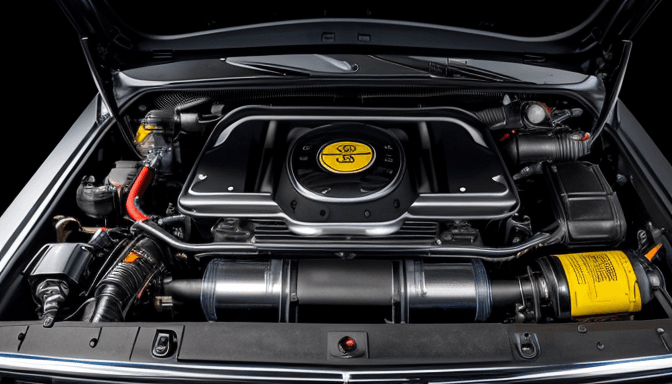
E85 Fuel for the 2JZ: Benefits, Drawbacks, and Tuning Tips
When it comes to fueling your 2JZ engine, E85 often pops up as a tempting option—and for good reason. This blend, mostly made of ethanol, offers some unique perks that can seriously boost your engine’s performance. Think of E85 as the cool breeze on a hot day; it cools the intake charge more effectively than regular pump gas. This means your engine can run more aggressive timing and higher boost without the dreaded knock, which is a big win if you’re chasing power.
But, it’s not all sunshine and rainbows. One of the first things you’ll notice with E85 is its thirst—it burns richer than gasoline, so your fuel system needs to keep up. If you don’t upgrade your injectors and fuel pump, you might find yourself running lean, which is a quick way to ruin a perfectly good engine. Plus, E85’s availability isn’t as widespread as regular gas, so planning your fill-ups takes a bit more effort.
Now, tuning your 2JZ for E85 isn’t just about throwing more fuel at it. You have to adjust your engine management system to take advantage of ethanol’s higher octane rating and cooling properties. This means recalibrating ignition timing, fuel maps, and sometimes even boost levels to squeeze out the best performance. If you’ve ever tweaked a guitar, you know how small adjustments can change the whole sound—that’s exactly how tuning for E85 works.
One thing I learned firsthand: switching to E85 without proper tuning felt like trying to run a marathon in flip-flops—possible, but not pretty. After a proper tune, the engine felt smoother, pulled harder, and the turbo spooled faster. It’s like your 2JZ suddenly found a new gear.
Of course, there are a few drawbacks to keep in mind. Ethanol can be harder on fuel system components if they aren’t designed for it, so corrosion and wear become concerns over time. Also, cold starts can be trickier, especially in cooler climates. But with the right setup and a little patience, these issues are manageable.
In short, E85 is like a high-performance fuel cocktail for your 2JZ. It demands respect and preparation but rewards you with cooler running temps, higher boost potential, and a noticeable jump in power. Just remember: upgrading your fuel system and investing in a solid tune are non-negotiable if you want to enjoy the benefits without the headaches.
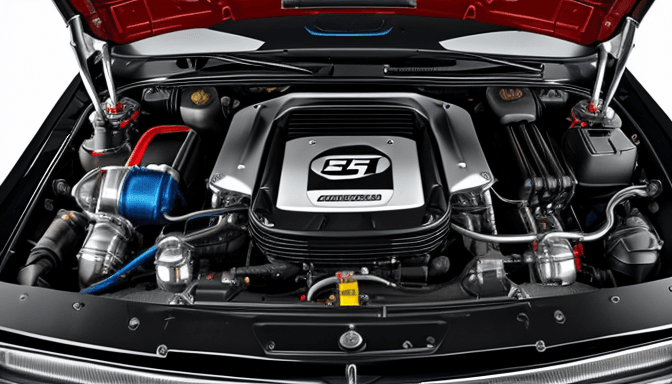
Ideal Octane Levels for Boosted and High-Compression 2JZ Engines
When it comes to boosted or high-compression 2JZ engines, the octane level of your fuel isn’t just a number—it’s the difference between smooth power delivery and costly engine knock. Think of octane as your engine’s resistance to knocking, which happens when fuel burns unevenly and creates those nasty little explosions inside the cylinder. And trust me, your 2JZ doesn’t like those surprises.
For naturally aspirated 2JZs, 87 to 91 octane might do the trick without much fuss. But crank up the boost or compression, and you’re entering a whole new ballgame. Here, **higher octane fuels** become essential. Why? Because as you increase cylinder pressure, the fuel-air mixture gets hotter and more prone to premature detonation. Running anything less than 91 octane in these conditions is like walking a tightrope without a safety net.
In practical terms, most boosted 2JZ setups perform best on fuel rated between 93 and 100 octane. This range offers a solid buffer against knock, allowing you to push timing and boost without fearing damage. For instance, if you’re running a turbocharged 2JZ with a compression ratio above 9.5:1, stepping up to 93 octane or higher isn’t just recommended—it’s crucial. Some hardcore builds even go for race fuels with octane ratings north of 100, especially when chasing serious power.
But here’s the catch: higher octane doesn’t automatically mean more power. It gives your engine the freedom to run more aggressive timing and boost safely, but you still need the right tuning to unlock those gains. It’s like giving an athlete better running shoes—they won’t win the race without training, but those shoes sure help prevent injuries.
Let’s break down why this matters:
- Boosted engines compress the air-fuel mixture more, raising the risk of knock.
- High-compression setups squeeze that mixture tighter, demanding better fuel to avoid premature ignition.
- Lower octane fuels can cause pinging, leading to heat buildup and potential engine damage.
In other words, your fuel choice is a safety net and a performance tool wrapped into one. It’s not just about picking the highest octane and calling it a day—it’s about matching your fuel to your engine’s demands and tuning accordingly. If you’re unsure, lean toward the higher octane side. It’s cheaper to spend a few extra cents at the pump than to rebuild your engine.
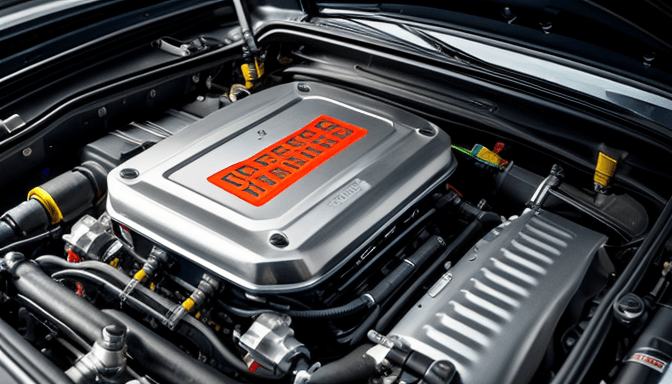
Fuel System Upgrades Required for E85 and Methanol Use
Switching your 2JZ to run on E85 or methanol isn’t just about filling up with a different liquid. These fuels demand a serious rethink of your fuel system. Why? Because they behave differently under the hood, and your engine needs to be fed just right to stay happy and healthy.
First off, E85 and methanol have a much lower energy density compared to regular gasoline. This means your engine needs more fuel volume to make the same power. Imagine trying to drink soup with a tiny spoon versus a big one—you need that bigger spoon to get the job done faster. In practical terms, this translates to upgrading your fuel injectors to higher flow rates. Stock injectors just won’t cut it; they’ll starve your engine, causing lean conditions that can lead to serious damage.
But it’s not just about injectors. Your fuel pump also needs an upgrade. Running E85 or methanol requires a pump that can handle higher flow rates consistently. If your pump can’t keep up, you’ll see fuel pressure drop, which kills performance and risks engine health. Alongside this, fuel lines and seals often need to be swapped out for ethanol- and methanol-compatible materials. These fuels are more corrosive than gasoline, and old rubber or plastic parts can degrade quickly, leading to leaks or blockages.
Now, what about the fuel filter? It’s a small piece but plays a big role. E85 and methanol can loosen deposits inside your fuel system, so a high-quality, ethanol-rated fuel filter is essential to keep contaminants out of your injectors and engine.
One more thing to consider is the fuel pressure regulator. Since these fuels demand different pressure settings, having an adjustable or dedicated regulator ensures your fuel delivery stays spot-on under all conditions. Without this, you risk inconsistent fuel flow, which can cause hesitation or even engine knock.
Here’s a quick overview in table form to make things clearer:
| Component | Upgrade Needed? | Reason |
|---|---|---|
| Fuel Injectors | Yes | Higher flow rate needed due to lower energy density |
| Fuel Pump | Yes | Must supply increased volume consistently |
| Fuel Lines & Seals | Yes | Resistant to corrosion from ethanol/methanol |
| Fuel Filter | Recommended | Captures loosened deposits and contaminants |
| Fuel Pressure Regulator | Recommended | Maintains proper fuel pressure for consistent delivery |
In short, switching to E85 or methanol is like giving your 2JZ a new diet. It needs more fuel, cleaner fuel, and a fuel system that can keep up without breaking a sweat. Skipping these upgrades? That’s asking for trouble. Your engine will thank you with smoother runs, better power delivery, and a longer lifespan if you get this right.
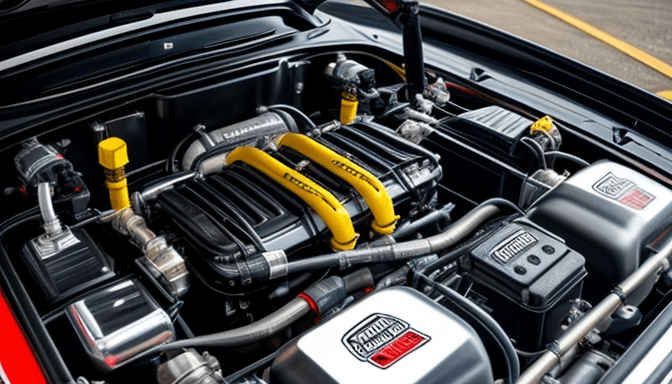
Knock Resistance and Combustion Efficiency Explained
Ever wonder why some fuels seem to make your 2JZ engine run smoother and stronger, while others leave you worried about that dreaded knock? It all boils down to two critical factors: knock resistance and combustion efficiency. These aren’t just fancy terms tossed around by tuners—they’re the heartbeat of how your engine breathes, burns, and ultimately performs.
Knock resistance is basically a fuel’s ability to withstand premature ignition under pressure. Imagine your engine’s combustion chamber as a tightly packed dance floor. When the fuel-air mix ignites exactly on cue, the dance flows perfectly. But if some of the fuel “dances” too early—causing knock or detonation—it’s like a dancer stepping on toes. This can cause serious damage over time. Higher octane fuels, like 91 or race fuel, resist this early ignition better than 87 octane, giving you a safer margin, especially when you’re pushing boost or running high compression.
On the flip side, combustion efficiency is all about how completely the fuel burns inside the cylinder. When fuel burns efficiently, you get more power and less waste. Think of it as lighting a campfire: dry wood burns hot and clean, while damp wood smokes and sputters. Fuel that burns efficiently means your 2JZ is getting the most bang for its buck, translating to sharper throttle response and smoother power delivery.
But here’s the kicker: these two factors are tightly linked. If your fuel knocks, combustion efficiency plummets because the engine has to pull timing and run leaner to protect itself. That’s like putting a speed bump on your power curve. The right fuel choice lets you run tighter ignition timing and richer mixtures, unlocking better performance without risking damage.
For example, running E85 on a 2JZ offers excellent knock resistance thanks to its high octane rating, but it demands more fuel volume to maintain combustion efficiency. This means upgrading injectors and pumps to ensure the engine gets enough juice to keep the fire burning strong.
In short, understanding how different fuels resist knock and burn efficiently can save you headaches and help you tune your 2JZ for both power and reliability. It’s not just about picking the highest octane—it’s about matching your fuel to your setup and driving style so your engine performs like a well-rehearsed symphony rather than a chaotic jam session.
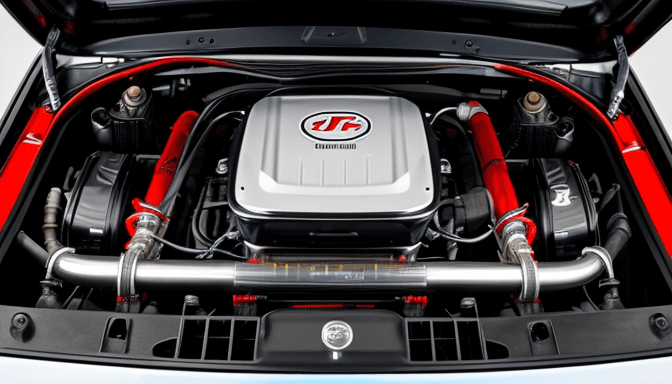
Utilizing Flex Fuel Sensors for Seamless Fuel Switching
Imagine cruising down the road, knowing your 2JZ engine is smart enough to adjust itself on the fly. That’s exactly what a flex fuel sensor does—it senses the blend of ethanol and gasoline in your tank and tells your engine’s computer how to adapt. No more guessing games or manual retuning every time you switch fuels. It’s like having a translator between your fuel and your engine, making sure they’re always on the same page.
These sensors are especially handy for drivers who like to flip between pump gas and E85. Without a flex fuel sensor, switching fuels can lead to rough idles, poor performance, or worse—engine knock. But with one installed, your engine management system can tweak ignition timing, fuel delivery, and air-fuel ratios in real-time. The result? Smooth transitions, better power delivery, and peace of mind that your 2JZ is running safely no matter what’s in the tank.
Think of the flex fuel sensor as a GPS for your fuel mixture. It continuously monitors the ethanol content, feeding that info to the ECU. The ECU then selects the appropriate fuel map—kind of like switching gears without you lifting a finger. This technology lets you enjoy the cooling benefits and increased octane of E85, while still having the option to fall back on regular pump gas when needed.
Of course, setting up a flex fuel system isn’t just plug-and-play. It requires compatible injectors, a tuned ECU that supports flex fuel inputs, and sometimes upgraded fuel pumps to handle the different flow rates and corrosive nature of ethanol. But once it’s dialed in, it’s a game of convenience and performance that pays off big time.
For anyone running a 2JZ with variable fuel choices, a flex fuel sensor isn’t just a luxury—it’s a smart investment. It keeps your engine happy, your power consistent, and your tuning flexible. So, why settle for one fuel type when you can have the best of both worlds, effortlessly?
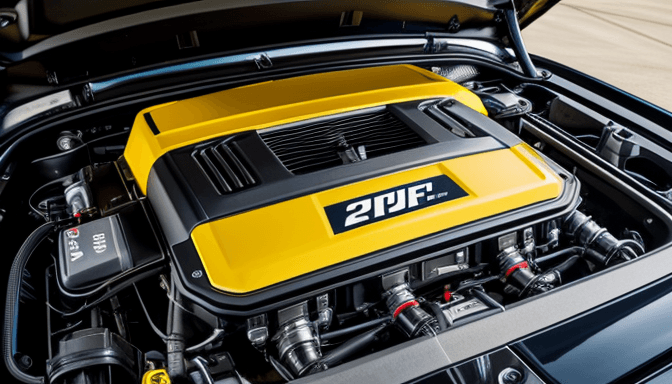
Top Fuel Brands for 2JZ Engines: Shell V-Power, VP Racing, and More
When it comes to fueling your 2JZ engine, not all fuels are created equal. You might ask, does the brand really matter? The short answer: absolutely. The 2JZ is a legendary engine known for its strength and tuning potential, but it’s also sensitive to fuel quality. Picking the right brand can be the difference between smooth power delivery and frustrating knock or hesitation.
Take Shell V-Power for example. This pump gas is a favorite among many 2JZ enthusiasts because of its consistent high octane rating—usually around 91 to 93—and its advanced additives that help keep the engine clean. It’s like giving your engine a little spa treatment every fill-up. You won’t just get power; you get reliability and peace of mind.
On the other hand, if you’re pushing your 2JZ hard—think boosted setups or high compression—race fuels like those from VP Racing come into play. These fuels often boast octane ratings well above 100, offering a wider safety margin against knock. But here’s the catch: they’re not just about octane. VP Racing fuels typically contain oxygenates and other chemicals designed to improve combustion efficiency and power output. They’re the go-to for track days and serious builds, but they demand proper tuning and fuel system upgrades.
But what if you want something in between? Brands like Sunoco and RaceGas offer a variety of options tailored for different performance levels. They strike a balance between pump gas convenience and race fuel performance, making them a solid choice for street-driven 2JZs with moderate modifications.
Here’s a quick snapshot to help you compare:
| Fuel Brand | Typical Octane | Best For | Key Benefits |
|---|---|---|---|
| Shell V-Power | 91-93 AKI | Daily driving, mild builds | Consistent quality, engine cleaning additives |
| VP Racing | 100+ RON | Track, high boost, race builds | High knock resistance, enhanced combustion |
| Sunoco | 93-104 RON | Street to race | Varied options, balanced performance |
| RaceGas | 93-110 RON | Performance street, race | Flexible options, good tuning support |
In the end, your choice boils down to what you want from your 2JZ. Are you cruising on the street or chasing lap times? Do you want a fuel that just works or one that squeezes every last drop of power? Remember, even the best fuel can’t replace good tuning and maintenance. But pairing your 2JZ with a trusted fuel brand like Shell V-Power or VP Racing? That’s a smart move that pays off every time you hit the throttle.

Fuel Choice Impact on Injector Sizing and Flow Rate
When it comes to fueling your 2JZ, the type of fuel you choose isn’t just about octane or performance—it directly affects your injector sizing and flow rate. Think of it like this: different fuels burn differently, and that means your engine needs a matching amount of fuel delivered at the right pace to keep things running smoothly. Using the wrong injector size can lead to lean or rich conditions, which no one wants, especially when you’re pushing your engine hard.
For example, E85 fuel has a lower energy content per unit volume compared to pump gas. This means your injectors need to flow more fuel to achieve the same power output. If you don’t upsize your injectors accordingly, your engine will run lean, risking damage and poor performance. On the flip side, race fuels with higher energy density might require smaller injectors, but they demand precision to avoid flooding the engine.
Here’s a quick way to visualize the impact:
| Fuel Type | Energy Content | Injector Flow Requirement | Typical Injector Size Change |
|---|---|---|---|
| Pump Gas (91 Octane) | Standard | Baseline | Stock or slightly upgraded |
| E85 | ~30% Lower | Higher flow needed | ~30% larger injectors |
| Race Fuel (100+ Octane) | Higher | Lower flow needed | Smaller or stock injectors |
It’s not just about size, either. Flow rate—how fast the injector sprays fuel—plays a huge role in throttle response and overall drivability. If your injectors can’t keep up, you’ll notice hesitation or even knock under boost. Conversely, oversized injectors can cause poor atomization, making tuning tricky and potentially harming fuel economy.
From personal experience, switching a 2JZ from pump gas to E85 without upgrading injectors was a recipe for frustration. The car stumbled, and the engine management system struggled to compensate. Once I installed larger injectors with a proper flow rate, the engine came alive—smooth power delivery and no lean spikes. It’s a clear reminder: matching your injectors to your fuel is *non-negotiable* if you want reliability and performance.
In short, fuel choice shapes your injector needs like a mold shapes clay. Ignoring this link is like trying to fit a square peg in a round hole—it just won’t work well. So, whether you’re dialing in pump gas, E85, or race fuel, always think about how your injectors will handle the job. It’s a small detail that makes a big difference in keeping your 2JZ humming perfectly.
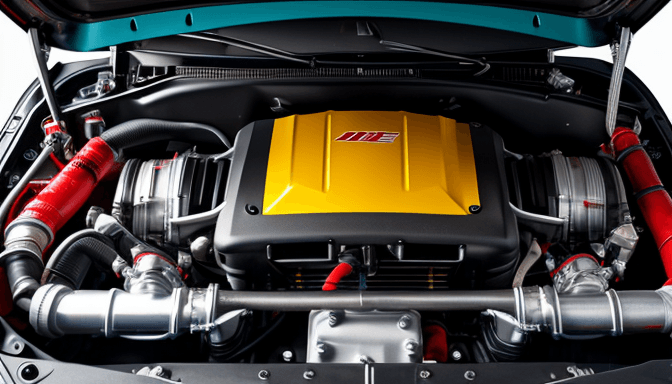
How Fuel Type Influences Turbo Spool, Throttle Response, and Power Delivery
Ever wondered why your 2JZ feels different on various fuels? It’s not just in your head. The type of fuel you use plays a huge role in how your turbo spins up, how sharp your throttle feels, and how power flows to the wheels. Think of fuel as the lifeblood of your engine—its quality and characteristics directly shape performance.
Let’s break it down. Different fuels have different energy densities and burn rates. For example, race fuels typically have higher octane ratings and burn slower and cooler. This means you can push your turbo harder without worrying about knock, letting it spool more aggressively. On the flip side, pump gas like 87 or 91 octane burns faster but can limit how much boost you safely run, which might dull that turbo kick-in feeling.
Now, when you switch to something like E85, things get interesting. E85 has a lower energy content per gallon, so you’ll need to flow more fuel to keep the engine happy. But here’s the kicker: it cools the intake charge like a champ. Cooler air means denser air, which helps the turbo spool up faster and can sharpen throttle response. It’s like giving your 2JZ a refreshing gulp of cold water on a hot day—instantly more eager to perform.
However, this comes with a trade-off. Because E85 requires more fuel volume, your fuel system has to be up to the task. If not, you might feel a lag or hesitation, especially at wide-open throttle. So, tuning and proper injector sizing become critical to keep power delivery smooth and predictable.
Imagine your turbo as a sprinter. With high-octane, race-grade fuel, it can sprint hard and fast without tripping over knock or heat. With pump gas, it jogs cautiously, mindful of limits. E85? It’s like giving that sprinter a boost of energy drink—faster off the line but needing more hydration (fuel) to keep going strong.
In the end, your fuel choice shapes not just raw power numbers but how your 2JZ feels day-to-day. Whether it’s that sharp throttle response that makes driving fun or the steady power delivery that keeps you confident on the road, fuel is the secret ingredient behind the scenes.
Frequently Asked Questions
- Can I run 87 octane fuel in my 2JZ engine?Sure, you can use 87 octane in a 2JZ, especially if it’s naturally aspirated and stock. But beware—lower octane means a higher chance of knock, especially under boost or high compression. Think of 87 octane as the entry-level ticket; it works, but it won’t unlock the engine’s full potential or provide the safest margin for tuning.
- What’s the difference between premium pump gas and race fuel for a 2JZ?Premium pump gas usually hovers around 91-93 octane and is formulated for daily driving. Race fuel, on the other hand, often boasts octane ratings well above 100 and contains additives that improve combustion and protect your engine under extreme conditions. If you want power and peace of mind during aggressive tuning, race fuel is like a superhero cape for your 2JZ.
- Is E85 a good choice for my 2JZ engine?E85 is fantastic if you want cooler combustion temperatures and higher knock resistance, which means you can push boost and timing harder. But be ready for higher fuel consumption and the need for specific tuning and fuel system upgrades. It’s like switching to a turbo-charged diet—more fuel, more power, but you’ve got to manage it right!
- What octane level should I use for boosted or high-compression 2JZ setups?For boosted or high-compression engines, 91 octane is the bare minimum, but 93 or higher is strongly recommended. Higher octane fuels resist knock better, allowing you to safely extract more power. Imagine octane as your engine’s shock absorber—higher ratings smooth out the bumps when you push hard.
- Do I need to upgrade my fuel system to run E85 or methanol?Absolutely. E85 and methanol require larger injectors, higher-capacity fuel pumps, and often reinforced fuel lines due to their corrosive nature and increased flow needs. Think of it as upgrading from a garden hose to a fire hose to keep your engine properly fed.
- How does fuel choice affect turbo spool and throttle response?Fuel type influences combustion speed and knock resistance, which in turn affects how quickly your turbo spools and how responsive your throttle feels. Higher octane or E85 fuels allow more aggressive timing and boost, resulting in quicker spool and sharper throttle response—kind of like switching from a tricycle to a motorcycle.
- Can I switch between pump gas and E85 without retuning?With a flex fuel sensor and switchable fuel maps, yes! Your 2JZ can adapt on the fly, adjusting fueling and timing based on the detected ethanol content. It’s like having a chameleon engine that changes its colors to match the fuel you throw at it.
- Which fuel brands are best for 2JZ engines?Brands like Shell V-Power, VP Racing Fuels, and others are popular because they offer high octane ratings and quality additives that protect and enhance performance. Choosing the right brand is like picking a trusted teammate who knows how to keep your engine in top shape.
- How does fuel choice impact injector sizing?Different fuels have varying energy content—E85, for example, requires roughly 30% more fuel volume than gasoline. This means you’ll need larger injectors or higher flow rates to keep your 2JZ running lean-free. It’s like needing a bigger straw to drink a thicker smoothie.
- What should I know about knock resistance and combustion efficiency?Higher octane fuels and ethanol blends resist knock better, allowing for more aggressive ignition timing and higher compression ratios. This improves combustion efficiency and power output while protecting engine components. Think of knock resistance as your engine’s armor against destructive pinging.